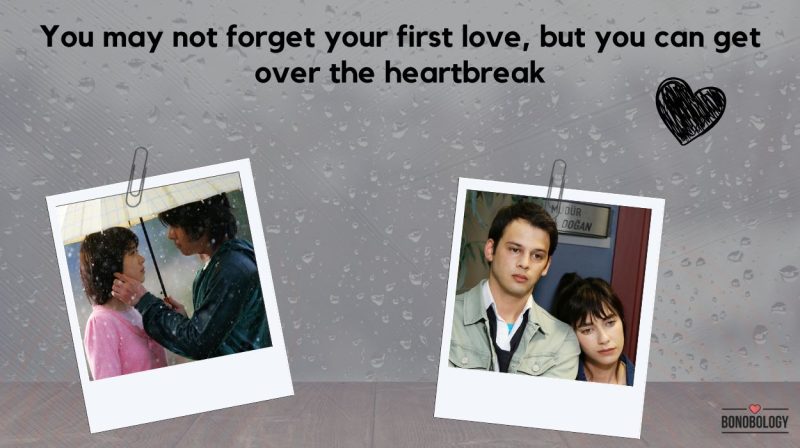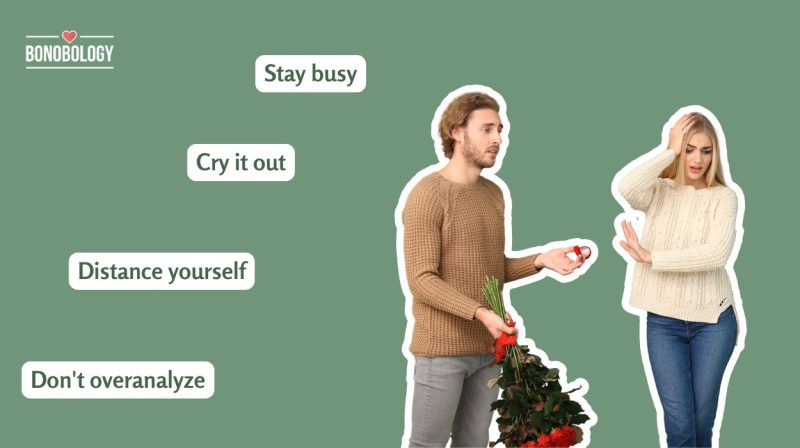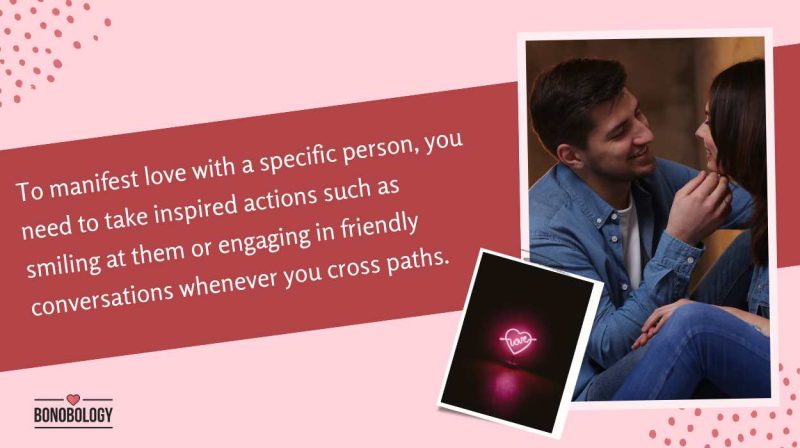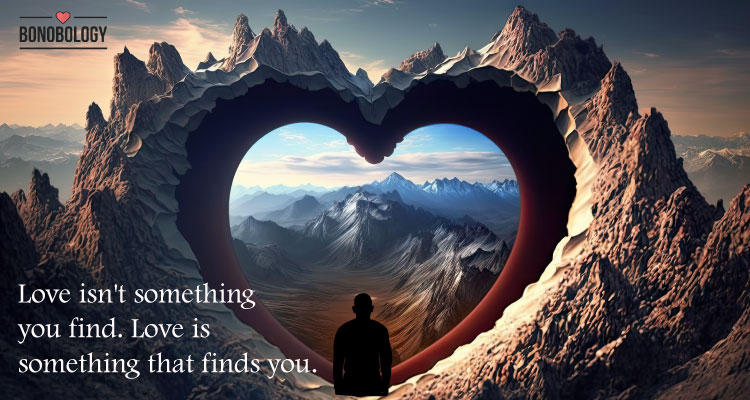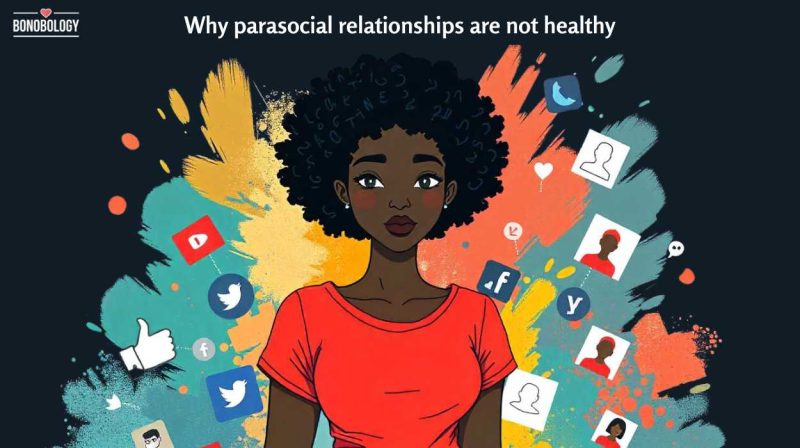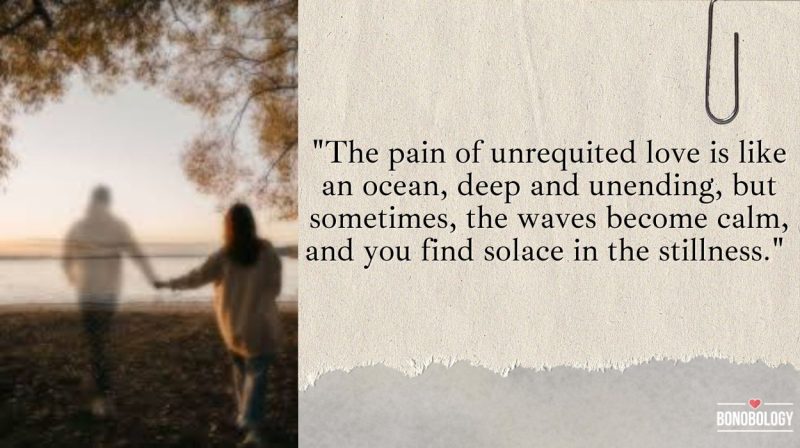Raise your hand if you’ve watched the Netflix show You. Keep your hand raised if you’ve done anything remotely similar to what Joe Goldberg did in the initial stages. Obsessive thoughts, wild fantasies, all-consuming hopes, and borderline stalking. Did you do all of this with the firm conviction of being in love? You can’t see me, but I’m heaving a sigh of despair. We have a difficult conversation lying ahead of us.
Despite your best beliefs, what you’re experiencing is not love. It is a seemingly beautiful word called ‘limerence.’ Has a nice ring to it, no? Don’t be fooled by the poetic feel of it; limerence is damaging your life in more ways than you could ever imagine. This is exactly why we’re putting it under the microscope today. To throw some light on the myriad facets of limerence, I have roped in psychotherapist Dr. Aman Bhonsle (Ph.D., PGDTA), who specializes in relationship counseling and Rational Emotive Behavior Therapy.
Dr. Bhonsle and I are here to answer all your questions – How do you define limerence? Why is it different from love? And what are a few limerence symptoms to watch out for? Let’s get the ball rolling.
What Is The Meaning Of Limerence?
Table of Contents
A stellar woman named Dorothy Tennov is credited with coining the term limerence in 1979 (yes, it goes waaaaayyyy back), describing it as a form of intense infatuation. Limerence is a state of mind where an individual has powerfully consuming thoughts about another person, one they are romantically interested in. These thoughts are quite intrusive and almost result in an imagined or fantasy-based relationship. The obsession is intensely addictive and destructive.
At times, it may be accompanied by unrealistic optimism for a future with that person. It is important to note that limerence is almost always one-sided and untethered from reality. It is infatuation, not love. Look at these lines from Shakespeare’s sonnet which capture limerence perfectly.
“Incapable of more, replete with you,
My most true mind thus makes mine untrue.”
Let’s understand limerence better with an example. For instance, a woman – we’ll call her Julia – develops a crush on a new coworker. It’s fairly harmless in the beginning and Julia goes through the motions of blushing, smiling, nervousness, etcetera.
But the infatuation seems to be strengthening rapidly. Julia can’t concentrate on work, friends, or family; a dry reply from him ruins her day in an instant. If he smiles at her, she’s on cloud nine. Her life is in complete control of this unhealthy fixation which brings out the worst in her. It is evident to her friends that the coworker is not interested in her. How can they burst her bubble and bring her back to the real world?
Now, you could either be a Julia who’s in some dire need of introspection or you could be a friend looking out for a Julia. If you want the answer to the million-dollar question of what is limerence, keep scrolling down. You might not like what you read in a few places, but remember what Dr. Bhonsle says, “The very first step of recovery is to know that you’ve got a problem at hand. The awareness of it might not make you feel too good, but you must begin.”
Related Reading: 9 Ways To Get Over And Cope With Unrequited Love
The 3 Stages Of Limerence
You’re probably thinking that limerence sounds like a crush gone wrong, so what’s the big deal? Maybe taking a look at the stages of limerence will help you see it better. There are three phases in which a person experiences limerence – the beginnings of infatuation, the peak of crystallization, and the end with deterioration. Much like a bell-shaped graph.
1. Sweet and small beginnings – Infatuation
The playback of this phase is ‘What makes you beautiful’ by One Direction. This is where the fire starts with a spark in your heart. You see the object of admiration for the first time and they catch your eye. Their wonderful qualities are magnified in your heart a hundredfold as you keep thinking about them. The red flags disappear when you’re wearing rose-tinted glasses.
We all know that having a crush is a pretty good feeling. Dopamine and serotonin work their magic on your brain; the world seems like a musical with sunshine and rainbows. In the initial stages of limerence, you too will feel like you’re in seventh heaven.

2. Maxing out – Crystallization
What’s the word I’m looking for? Mania. The worst limerence symptoms are exhibited at this stage. The fixation on another person leads one to self-destructive behavior patterns; stalking them on the internet, signs of unhealthy jealousy at their interactions with others, full-fledged imagined futures, and extreme distraction.
The object of adoration is put on a pedestal of worship; they are infallible and can do no wrong. Anyone who speaks against them is construed to be an enemy. The goal is to seek the approval and validation of the romantic interest at all costs. The individual fears rejection severely and wants to avoid being on the receiving end of it. Crystallization is quite time-consuming and mentally invasive – any guesses on why limerence and regret go hand-in-hand?
3. Signs limerence is ending – Deterioration
The illusion falls apart and disappointment follows. In this stage, the crush loses power over the mind and becomes a mere mortal again. As limerence fades, the individual experiences extreme frustration, sorrow, and discontent. After having been occupied with someone’s thoughts for so long, the sudden return to reality renders them directionless. They have to get over someone they never dated.
Feeling the blues is quite expected during deterioration. But this phase is much-awaited and beneficial in the larger view of things. Once you get past it, the healing can finally begin as you resume focusing on yourself.
Dr. Bhonsle talks about the detrimental effect of these stages of limerence, “Anything one-sided is always harmful because it makes you lose touch with the ground reality. Limerence is extremely unsustainable. It is unrelated to love in every way conceivable. Love is always reciprocal, while limerence is unrequited.”
Limerence Is Toxic Love In Nature – 7 Signs That Say So
Norman Mailer wrote, “Obsession is the single most wasteful human activity because with an obsession you keep coming back and back and back to the same question and never get an answer.” I bet you agree with him after having seen the stages of limerence. But I’m an organized person who simply loves lists. They leave no room for ambiguity. So that’s precisely what’s coming next.
It’s time to examine the 7 signs that prove the toxic nature of limerence. We hope the self-awareness will steer you clear of such self-sabotaging behavior hereon.
1. Who’s the number 1?
Not you, for sure. One of the first drawbacks of limerence is the way it changes your priorities. Dr. Bhonsle explains, “When you’re putting someone on a pedestal, you’re automatically de-prioritizing yourself. They take precedence in your mind as your well-being takes a backseat. And whatever makes you lose sight of yourself is never healthy. We have to look out for ourselves – everyone else does the same.”
Limerence causes an individual to damage themselves psychologically, emotionally, and physically. When another person becomes all-important, the opportunity cost is immense. The other spheres of life are neglected; your wishes, needs, emotions, and ambitions take a blow because of the obsessive thoughts that occupy your mind. You forget how to love yourself.
Look at it this way – you put the limerent object (the one you’re interested in) first. The limerent object puts themselves first too because they do not feel the same way about you. In this picture, where does your welfare fit in?
Related Reading: What Does It Mean When Someone Ignores You?
2. Extra (emotional) baggage
Limerence is an indicator of unresolved issues in the past. Unhealthy behaviors find their roots in our experiences and/or formative years. We are shaped by a series of incidents and processes that affect us adversely. Nothing just ‘happens.’
Dr. Bhonsle puts it concisely, “Limerence is a form of delusion, and any delusion serves to offer structure and a sense of warmth in a person’s life. There can be two possible reasons behind this: a dysfunctional childhood and family dynamics or unrealistic expectations from relationships. Both are a tell-tale that you require help. A healthy relationship is built by healthy individuals.”
Maybe you have witnessed your parents going through a bad divorce as a child. Or maybe your family was toxic or abusive. Perhaps your ex was a drug addict or an alcoholic. No matter which painful situation you have emerged from, you are carrying a lot of emotional baggage. This is what has brought you to the limerence symptoms.

3. World, who?
Like a feather floating mid-air, you are adrift in the cool breeze of misperceived love. You are one with the clouds – far, far away from worldly troubles. The one you adore is all you can see… Everything is light and airy… How lovely… Allow me to gently bring you back to the ground.
When we talk about limerence vs love, a distinguishing feature emerges instantly. Limerence brings out the worst traits in people. They become moody, cranky, obsessive, controlling, and desperate (all in one go). Profoundly disconnected from the world, they compromise their career and personal lives to a large extent. But love…sweet love brings out the best in people.
Individuals who are deeply in love with someone are their very best selves. They experience a significant rise in self-esteem, report higher levels of happiness and satisfaction, and are more driven in their activities. Limerence makes you lose touch with what’s going on in the world. Still, think it’s not toxic?
4. Loss of control
I mean, loss of self-control. When you allow someone to occupy a lot of mental space, you’re handing over a significant amount of power. The limerent object wields influence over your mood and emotional state; there is a direct relationship between their actions and your condition. This stems from a twofold need – seeking their approval and avoiding their rejection. But the best way to handle rejection is by facing it.
Dr. Bhonsle elaborates, “The fear of rejection is very powerful, and might I add, very unnecessarily powerful. Rejection is a universal reality, not something to be taken so personally. It just means that you were not a part of someone’s original plan. You can’t fit in everywhere and that’s okay. Unfortunately, limerence amplifies this fear; any perceived rejection can bring along a sense of failure.”
For instance, you drop a text to your limerent object, inviting them to a party. They are busy with something and reply a few hours later. Construing this as disinterest from their end, you sink into the quicksand of sadness and limerence and regret.
Related Reading: How Do I Move On From One-Sided Love? Our Expert Tells You…
5. Let the mind games begin – Signs of limerence
Individuals experiencing limerence can go to crazy lengths for the sake of ‘love’. Manipulating, gaslighting, giving the silent treatment, guilt-tripping, blackmailing, and blame-shifting are a few (of many) examples. And here’s the scary part – the limerent object might be completely unaware of the games being played out in the person’s mind.
Since limerence leads to a faux relationship in an individual’s mind, they assume the limerent object’s involvement even when there is none. They are the only ones present in the imagined connection. When things truly get out of hand, the behavior becomes more dangerous and erratic.
Dr. Bhonsle points out the risky possibilities ahead, “At its worst, limerence can lead to full-fledged stalking and harassment. This negatively impacts the limerent object too. But on a personal level, the individual in limerence can develop a mood-based disorder. The psychological effects are devastating for the person in question.”

6. Myopia in your-opia
Like we’ve explained before, limerence makes you view another person as infallible. You become blind to their shortcomings due to your narrow vision. If the limerent object is a toxic individual – a bully, a sexist, a racist, or an abuser – you might end up getting mistreated by them. And this too will be rationalized (and romanticized) by your mind. You can’t define limerence without the word ‘irrational.’
You’ll lose the ability to stand up for yourself in certain situations. Limerence puts you in a very compromising position because you let people breach any and all emotional boundaries. Needless to say, you let the limerent object walk all over you. As Mahatma Gandhi wisely said, “I cannot conceive of a greater loss than the loss of one’s self-respect.”
This is also where love differs by leaps and bounds. A loving relationship means taking an objective view of your partner and accepting them with their flaws. In limerence vs love, the latter is always conducive to respect and growth.
7. Awful aftermath
While infatuation and crystallization are pleasurable in nature, the last stage of limerence is downright terrible. At some point or the other, a person realizes that their limerent object is not worth the drama. But this realization does not come by its lonesome – you get bonus gifts of anger, frustration, regret, and woe.
Recalibrating from this situation can take a while for the person. They begin to hit a rock bottom of sorts with the signs limerence is ending. In this case, seeking professional help is the best course of action. Dr. Bhonsle weighs in, “Reach out to a counselor or a therapist to get an even-handed evaluation of where you stand. In extreme cases, a psychiatrist can also be a good choice. Acknowledge the fact that you cannot get better all by yourself.”
Many people have emerged from challenging emotional states with the aid of mental health professionals. You can seek help from the licensed therapists and counselors on Bonobology’s panel to analyze your situation better. Healing is a click away.
Here we come to the end of this comprehensive guide on limerence. With God’s grace and some good sense, you’re not going to fall into this trap. You know what’s in store for you? A real connection with someone you truly love. It’s coming your way, just wait for it. Until then, exercise reason and prudence. My very best wishes to you – farewell and adieu!
FAQs
I’m not sure if ‘triggers’ is the correct word. The beginnings of limerence can be found in a person’s childhood with dysfunctional family dynamics or abusive parents. Similarly, previous relationships may have affected their attachment style and dating approach. Limerence always originated from unresolved issues, emotional baggage, and/or unprocessed trauma.
According to Dorothy Tennov, who coined the word, limerence can last between 18 months to 3 years. It differs with the intensity of a person’s feelings. If the attraction becomes mutual eventually, the feelings become stronger.
This much-debated question has found no consensus with the experts. Some say yes, others say no. But Tennov’s research seems to suggest that limerent relationships are unstable and unhealthy.
8 Ways To Deal With Saying ‘I Love You’ And Not Hearing It Back
How To Cope If You Have A Crush On Someone Who Is In A Relationship
Your contribution does not constitute a charitable donation. It will allow Bonobology to continue bringing you new and up-to-date information in our pursuit of helping anyone in the world to learn how to do anything.



